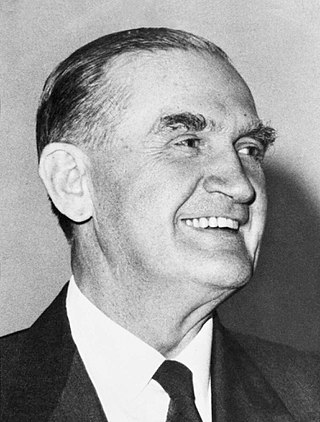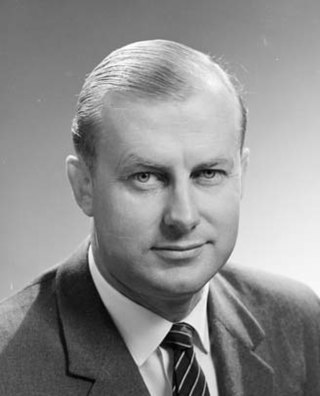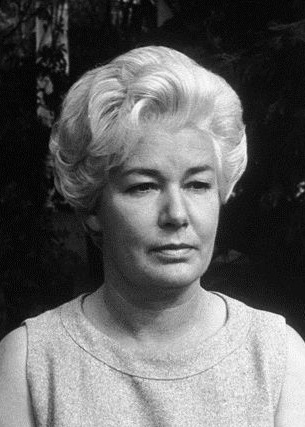
Harold Edward Holt was an Australian politician and lawyer who served as the 17th prime minister of Australia, from 1966 until his disappearance and presumed death in 1967, holding office as leader of the Liberal Party of Australia.

The Liberal Party of Australia is a centre-right political party in Australia. The party is one of the two major parties in Australian politics, the other being the Australian Labor Party. The Liberal Party was founded in 1944 as the successor to the United Australia Party, and has since become one of the most successful political parties in Australia's history.
The National Party of Australia, also known as The Nationals or The Nats, is a centre-right Australian political party. Traditionally representing graziers, farmers, and regional voters generally, it began as the Australian Country Party in 1920 at a federal level.

The prime minister of Australia is the head of government of the Commonwealth of Australia. The prime minister heads the executive branch of the federal government of Australia and is accountable to federal parliament under the principles of responsible government. The prime minister is the chair of the federal cabinet and the national cabinet and a member of the federal executive council. The current prime minister is Anthony Albanese of the Australian Labor Party, who assumed the office on 23 May 2022.

Sir John Grey Gorton was an Australian politician who served as the 19th prime minister of Australia, from 1968 to 1971, holding office as the leader of the Liberal Party of Australia. Previously a senator for Victoria, he was the first and only member of the upper house to assume the office of prime minister.

Sir William McMahon was an Australian politician who served as the 20th Prime Minister of Australia, from 1971 to 1972, holding office as the leader of the Liberal Party of Australia. He was a government minister for over 21 years, the longest continuous service in Australian history.

Sir John McEwen was an Australian politician and farmer who served as the 18th prime minister of Australia, from 1967 to 1968, holding office as the leader of the Country Party. He was prime minister in a caretaker capacity following the disappearance of prime minister Harold Holt.

John Douglas Anthony PC was an Australian politician. He served as leader of the National Party of Australia from 1971 to 1984 and was the second and longest-serving Deputy Prime Minister, holding the position under John Gorton (1971), William McMahon (1971–1972) and Malcolm Fraser (1975–1983).

The deputy prime minister of Australia is the deputy chief executive and the second highest ranking officer of the Australian Government. The office of deputy prime minister was officially created as a ministerial portfolio in 1968, although the title had been used informally for many years previously. The deputy prime minister is appointed by the governor-general on the advice of the prime minister. When Australia has a Labor government, the deputy leader of the parliamentary party holds the position of deputy prime minister. When Australia has a Coalition government, the Coalition Agreement mandates that all Coalition members support the leader of the Liberal Party becoming prime minister and mandates that the leader of the National Party be selected as deputy prime minister.

Peter James Nixon AO is an Australian former politician and businessman. He served in the House of Representatives from 1961 to 1983, representing the Division of Gippsland as a member of the National Country Party (NCP). He held ministerial office as Minister for the Interior (1967–1971), Shipping and Transport (1971–1972), Postmaster-General (1975), Transport (1975–1979), and Primary Industry (1979–1983).

Bettina Edith Gorton, Lady Gorton was an American-born Australian academic who was best known as the first wife of John Gorton, the 19th Prime Minister of Australia. She was born in Portland, Maine, met her husband while studying in France, and married in 1935. She developed an interest in South-East Asian culture relatively late in life, learning to speak Malay and Javanese and completing her first university degree at the age of 50. She was involved with a long-running Australian National University project to compile a Malay–English dictionary, although she curtailed her involvement during her husband's prime ministership (1968–1971).

The Gorton government was the federal executive government of Australia led by Prime Minister John Gorton. It was made up of members of a Liberal-Country Party coalition in the Australian Parliament from January 1968 to March 1971.

The Holt government was the federal executive government of Australia led by Prime Minister Harold Holt. It was made up of members of a Liberal-Country Party coalition in the Australian Parliament from 26 January 1966 to 19 December 1967.

The McMahon government was the period of federal executive government of Australia led by Prime Minister William McMahon of the Liberal Party. It was made up of members of a coalition between the Liberal Party and the Country Party, led by Doug Anthony as Deputy Prime Minister. The McMahon government lasted from March 1971 to December 1972, being defeated at the 1972 federal election. Writing for the Australian Dictionary of Biography, Julian Leeser describes McMahon's prime ministership as "a blend of cautious innovation and fundamental orthodoxy".

Richard Gavin Gardiner Casey, Baron Casey, was an Australian statesman who served as the 16th Governor-General of Australia, in office from 1965 to 1969. He was also a distinguished army officer, long-serving cabinet minister, Ambassador to the United States, member of Churchill's War Cabinet, and Governor of Bengal.

A leadership election in the Liberal Party of Australia, the party of government in the Parliament of Australia, was held on 9 January 1968. It followed the disappearance and presumed drowning of previous leader Harold Holt, who had been declared dead on 19 December 1967. The contest was won by Senator John Gorton in a party room ballot; he was sworn in as prime minister the following day, replacing caretaker John McEwen.

The Liberal Party of Australia held a leadership spill on 7 November 1969, following the party's poor performance at the federal election on 25 October. Prime Minister John Gorton was re-elected as the party's leader, defeating challengers William McMahon and David Fairbairn.

The Leader of the Liberal Party, also known as Leader of the Parliamentary Liberal Party, is the highest office within the Liberal Party of Australia and the Liberal–National Coalition. The position is currently, and has been since 30 May 2022, held by Peter Dutton, who represents the Division of Dickson in Queensland. Peter Dutton is the fifteenth leader of the Liberal Party. Dutton is also the first leader of the party to represent a Queensland electorate.

The R. G. Menzies House, also known colloquially as Liberal Headquarters, or simply Menzies House, is the official headquarters of the Australian Federal Liberal Party. It is also home to the party's think tank, the Menzies Research Centre. It was built in the Georgian architectural-style and is described as a "two-floored, red-brick house." It is located in the Canberra suburb of Barton, less than one kilometre from Parliament House.













